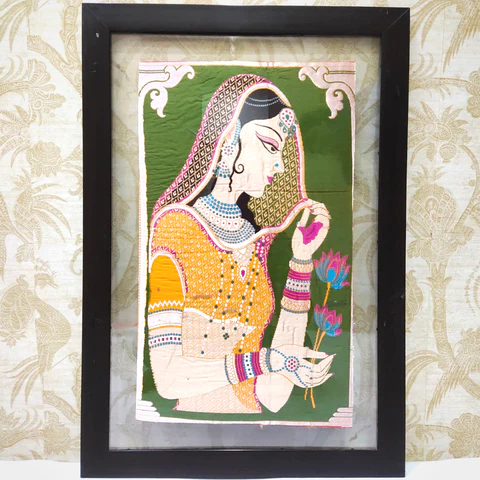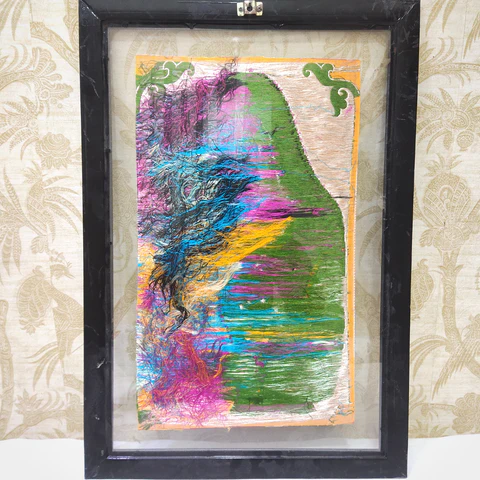
The legend of the stunning Rani Padmavati is one that has been immortalized time and again. In poetry, film and paintings, she has made her presence felt across time and through generations. The Rani Padmavati wall hanging has been weaved using the purest strands of Katan silk and Zari. By no means is this an easy feat, and the entire process took about a month for the artisans to complete.
Padmavati is known to be an exceptionally beautiful princess of the Singhal kingdom (Sri Lanka). Ratan Sen, the then Rajput ruler of Chittor Fort, heard about her beauty, won her hand in marriage and brought her to Chittor. Alauddin Khalji, the Sultan of Delhi went on to lay siege upon Chittor to obtain Padmavati. However, the battle was lost to Alauddin Khalji. But before Chittor was captured, the Rani and her companions committed Jauhar (self-immolation), thereby defeating Khalji’s aim and protecting their honor. Simultaneous to the Jauhar, the Rajput men died in the midst of battle. The legend of this queen has spurred the creation of portraits and poems that have made their way into garments across the country.
Katan silk is a term prevalent in Varanasi where the yarn is prepared by twisting various silk filaments that ensures its durability and sturdiness. It is handwoven using both a pure silk warp and weft. This fabric of silk is extremely fine, soft and lustrous and is partly responsible for putting Varanasi on the map for its silk. The origin of Katan silk saree goes back to Persia and the women from the royal family during the Mughal empire, who were known to wear luxurious and elaborately designed clothes using Katan Silk. Due to its sturdy nature and its royal look, women of royalty used to adorn elaborately designed clothes in fabric using Katan Silk.

The art of Zari that was used to spin the wall hanging is also one of legends. It is believed that the word Zari originated in a village by the same name in ancient Persia where artisans created and perfected the skill of weaving thin threads of gold and silver onto fine fabrics of silk. The art was brought to India by Persian migrants in the time period 1700-1100 BC – the period of Rig Veda.
The wall hanging, of the size 46x67cm was made entirely by the artisans using hand-weaving techniques on a traditional handloom setup. This method of textile production is such that two distinct sets of yarns or threads are interlaced at right angles to form a fabric or cloth. The method in which these threads are interwoven determines the quality of the fabric, and the feel of the final garment. The authenticity of the wall hanging is what makes it priceless and exquisite. The hanging has been set in a glass frame so that the customer can observe the backside of the wall hanging and the linking of the authentic threads.
This entire process took over a month due to the detail and intricacy necessary to replicate the essence of the painting onto the weaved wall hanging. Kaasi Weaves paid special attention to the weaving process, ensuring that the painting that served as inspiration, carried its essence into the final piece.
From start to finish, the hanging was created in the holy city of Varanasi, India, weaved by some of the most skilled artisans of the country. The famous portrait has inspired the designs of motifs that are now seen splashed across silk sarees.
The queen who hails from the 13th-14th century, Mewar kingdom was a sight to behold and a force to reckon with. It is thus that many artists have tried to capture her essence, by means of their medium. The long and heartfelt efforts of these artisans have created this magnificent and ornate piece. It is now an irreplaceable addition to the halls of the city of Varanasi and Rastogi Benarasi Silk House that serves as an integral portion of the beating heart of silk.
